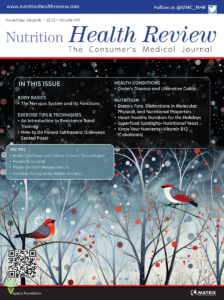Resistant starch: What is it?
Resistant starch is mentioned in books dating back to the 1920s, but there appears to be a gap in research from the mid-20s to the 1980s, when the topic started regaining attention. Resistant starch is, according to Asp et al, “any starch or starch digestion products that are not digested and absorbed in the upper digestive tract and, so, pass to the large bowel.”2,3 There are four types of resistant starch: RS1, RS2, RS3, and RS4. Most studies evaluating the benefits of resistant starch use RS2. Resistant starch, in being indigestible, is different from the starches found in cakes, noodles, and white breads, which all contain easily digestible types of starches. Research on resistant starch suggests that, under certain conditions, it can promote a feeling of satiety without adding extra calories to meals. In addition, resistant starch-rich foods have been shown to protect against illness, improve our gut microbiota, and change our body composition.
RESISTANT STARCH AND SATIETY
A study published in Nutrition Journal in 2017 fed RS2-enriched muffins to human participants who were overweight with no additional health issues for six weeks. The researchers observed an increase in satiety biomarkers (peptide YY) and a decrease in the hormone leptin (which increases appetite) among the resistant starch- fed group. In addition, this study, along with several other studies, observed a greater sensitivity to insulin in humans after consuming resistant starch. Greater sensitivity to insulin makes it easier for your body to regulate blood sugar levels, which can leave you feeling more satisfied after a meal and less prone to the energy “crash” that can occur after eating foods high in refined carbohydrates and sugars.
BODY COMPOSITION RESEARCH
Research evaluating the relationship between resistant starch intake and body composition has found a correlation between lower lean body mass and decreased fat mass in rats who were fed resistant starch.5 This study observed two groups of rats for eight weeks to determine whether the consumption of resistant starch caused fat to accumulate differently on the body. One group was fed a diet of resistant starch, and the other group was fed a diet of easily digestible starch. The researchers observed similar weight gain in both rat groups throughout the study period, despite observing a higher food intake by the rats in the resistant starch group. Interestingly, despite eating more food, the rats on the resistant starch diet ate fewer calories than the rats on the digestible starch diet. This might be explained by the indigestible nature of the resistant starch. In a body composition analysis of the rats, the rats who were fed a diet of digestible starch showed more fat accumulation than the rats who ate the resistant starch diet, despite similar amounts of weight gain in both rat groups.
GUT MICROBIOTA RESEARCH
Research has shown that foods high in resistant starch also play a beneficial role in balancing gut bacteria. Resistant starch is a prebiotic, which feeds healthy bacteria in the gut, promoting the colonization and maintenance of this healthy bacteria.6 In addition, while resistant starch cannot be digested by the human digestive system,
it does undergo a process called bacterial fermentation, and this fermentation yields beneficial byproducts that help protect against bowel diseases. This fermentation process has been shown to promote the production of a particular short chain fatty acid called butyrate,7 and high levels of fecal butyrate have been shown to be associated with lowered risk of diet-related large bowel diseases and colorectal cancer.8
WHERE TO FIND RESISTANT STARCH
The most economical way to incorporate the resistant starch into your diet is in powder form. Green banana flour, cassava flour, and potato starch powder contain some of the highest amounts of resistant starch and can be used in a variety of recipes. Whole food sources of resistant starch are lentils, yams, cassava, potatoes that have been cooked and then cooled, green/unripe bananas, oatmeal, and barley.9 Resistant starch can be added to one’s diet by simply adding potato starch to a glass of water and gulping it down or by consuming whole foods rich in resistant starch. Some studies10,11 have shown that the beneficial fermentation and increase satiety associated with resistant starch is enhanced when a single type of resistant starch is paired with a form of digestible starch (these studies used wheat bran). In these studies, the diversified starch profile of the foods consumed added more bulk to the digestion process, carrying the resistant starch further along the digestive tract, which, as a result, allowed the fermented resistant starch to be carried further into the lower digestive system.
Editor’s Note: Online discussion among those who have tried supplementing resistant starch in the form of potato starch powder, green banana flour, or other powdered forms of these resistant starch foods frequently report stomach cramping, increased flatulence, and diarrhea when beginning this regimen. Thus, if you are considering supplementing your diet with resistant starch in powder form, it might be prudent to start with no more than a tablespoon per day. You might also consider incorporating whole foods rich in resistant starch, such as lentils, potatoes, and oatmeal, as part of a healthy balanced diet, which might be easier to adjust to than powder supplements. As always, consult with your physician first if you have any special dietary needs.





